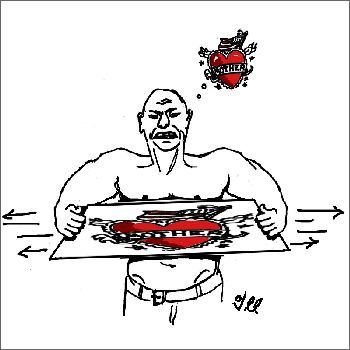Issues with Magnification
Scientific digital images are data that can be compromised by inappropriate manipulations.

- Digital images of real world objects sample the object such that each pixel in the image has a scale. This scale may be in meters per pixel for satellite images, or in tenths of microns per pixel for microscope images.
- Ideally, the scale is the same in both the X and Y dimensions; however, this is not always the case.
- In confocal microscopy and other sectioning techniques, the XY pixel also represents a volume, because the image includes a Z dimension. The Z dimension in confocal microscopy is typically twice that of the XY resolution, an issue that can lead to misinterpretation if not accounted for.
- It is imperative that the scale of the pixels in XY and Z be maintained so that features in the image can be correctly interpreted.
- The magnification of an image is determined by the difference between the original scale of the pixel and the scale of the pixel in its final form (e.g., paper printout, projected on the wall of a large lecture hall). Since it is often impossible to know in advance what the final magnification will be, a scale bar of known size is the best way to express the magnification.
- Journals may resize a figure to fit the page. Resizing the image makes any magnification number provided in the figure legend incorrect, whereas a scalebar resizes along with the image.
- The all-too-common practice of stating the magnification of a microscope objective in the figure legend—without taking into account other instrument optics and image processing—is sloppy science, and omits important information.
- Microscopes can, in several imaging modes, visualize objects smaller than the diffraction-limited resolution of the instrument.
- This does not mean that the microscope can resolve the structures, since visualizing sub-resolution structures only works if the objects are well separated from other objects in the image field. Resolution is defined as the ability to separate two closely adjacent objects, and is limited by the diffraction of the objects.
- Sub-resolution objects typically appear to be the same size as objects that are at the actual diffraction-limited resolution; however, this is an artifact. Because of this problem, measurements of the size of objects that are at, or near, the diffraction limit are very suspect.
- Another important issue with sampling small objects using digital image capture is the need to correctly oversample the object.
- The Nyquist sampling theorem suggests that a point object should be oversampled at least two times in X and Y. Because adequate contrast is essential to correctly resolve structures in microscopy, a 2.5-3 times oversampling is more appropriate.
- Higher levels of sampling (hyper-sampling) can yield increased accuracy of feature measurements (particularly for larger objects); however, there is often a resulting loss of contrast. Loss of contrast can make it difficult to determine where the edges of an object are, and it can make resolving two closely adjacent objects nearly impossible.
- Scientists studying live cells in time should also consider oversampling on the temporal scale to avoid artifacts.
- The reason for 2.5-3x oversampling is to avoid image artifacts.
- Undersampling an image—using too few pixels to accurately describe a small feature—can yield artifacts that masquerade as real structures, which can lead to misinterpretation of the image data.
- Oversampling does not lead to artifacts; however, it does not increase the diffraction-limited spatial resolution data to the image.
- When in doubt, oversample.
|

